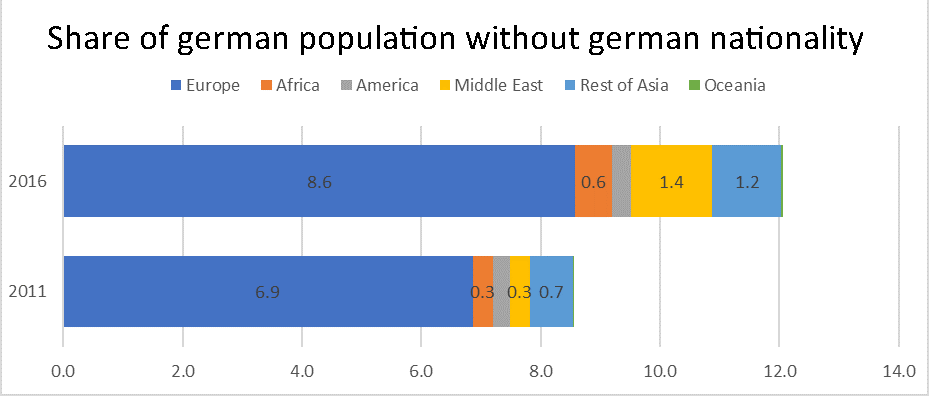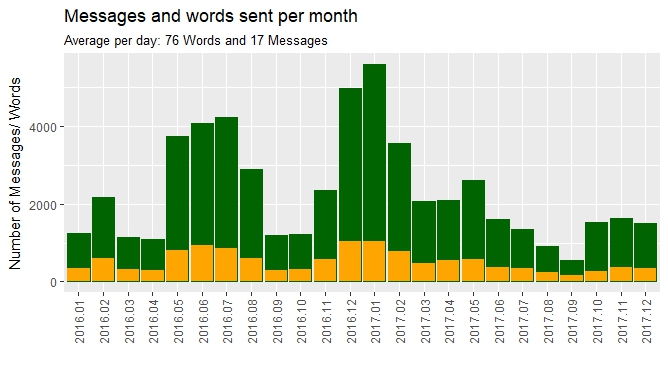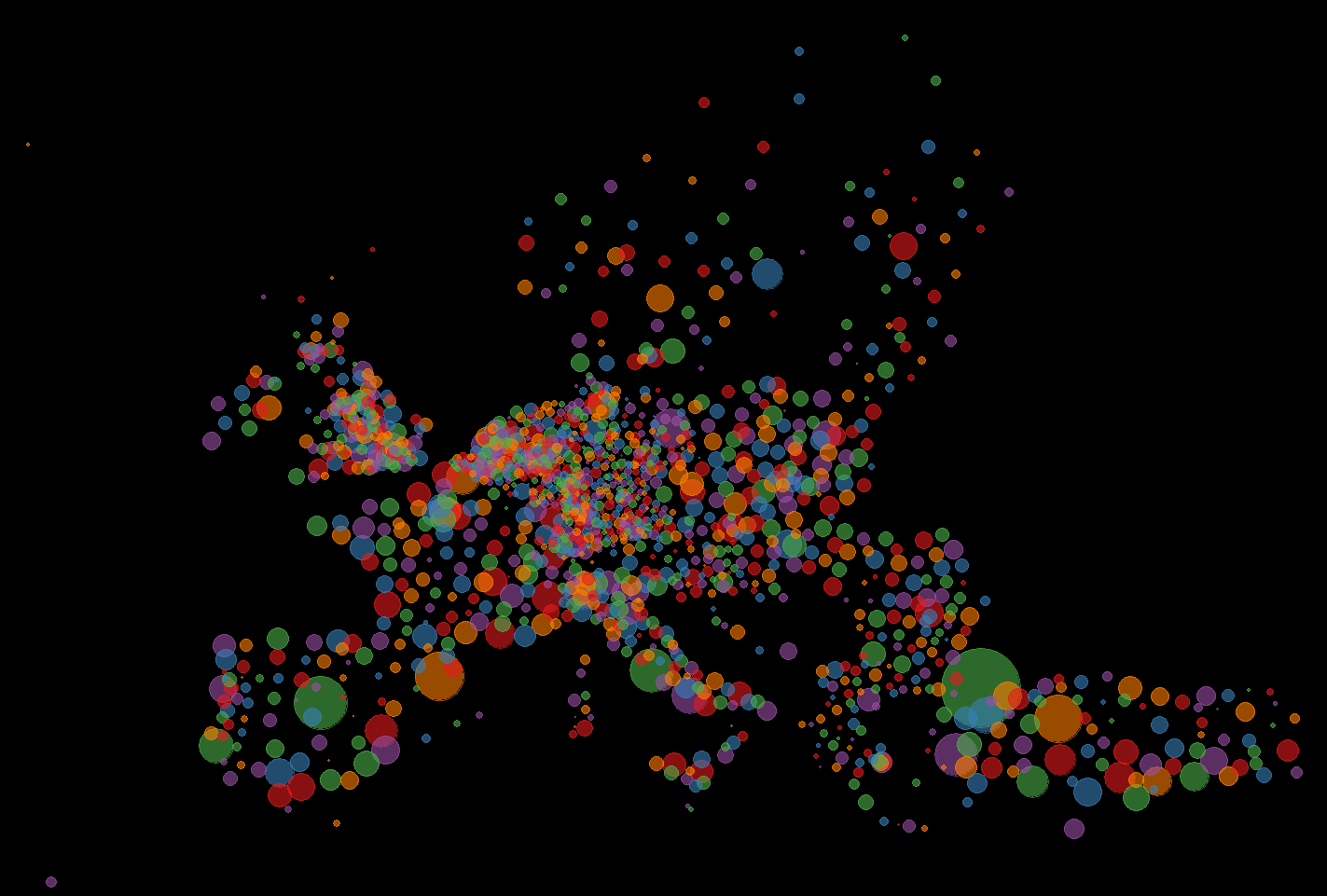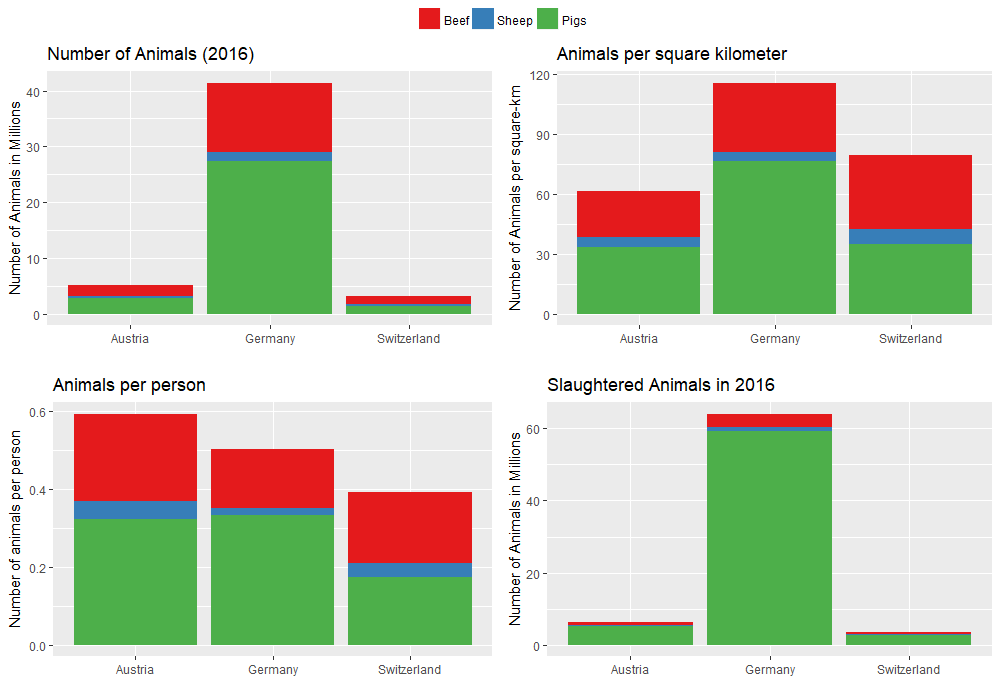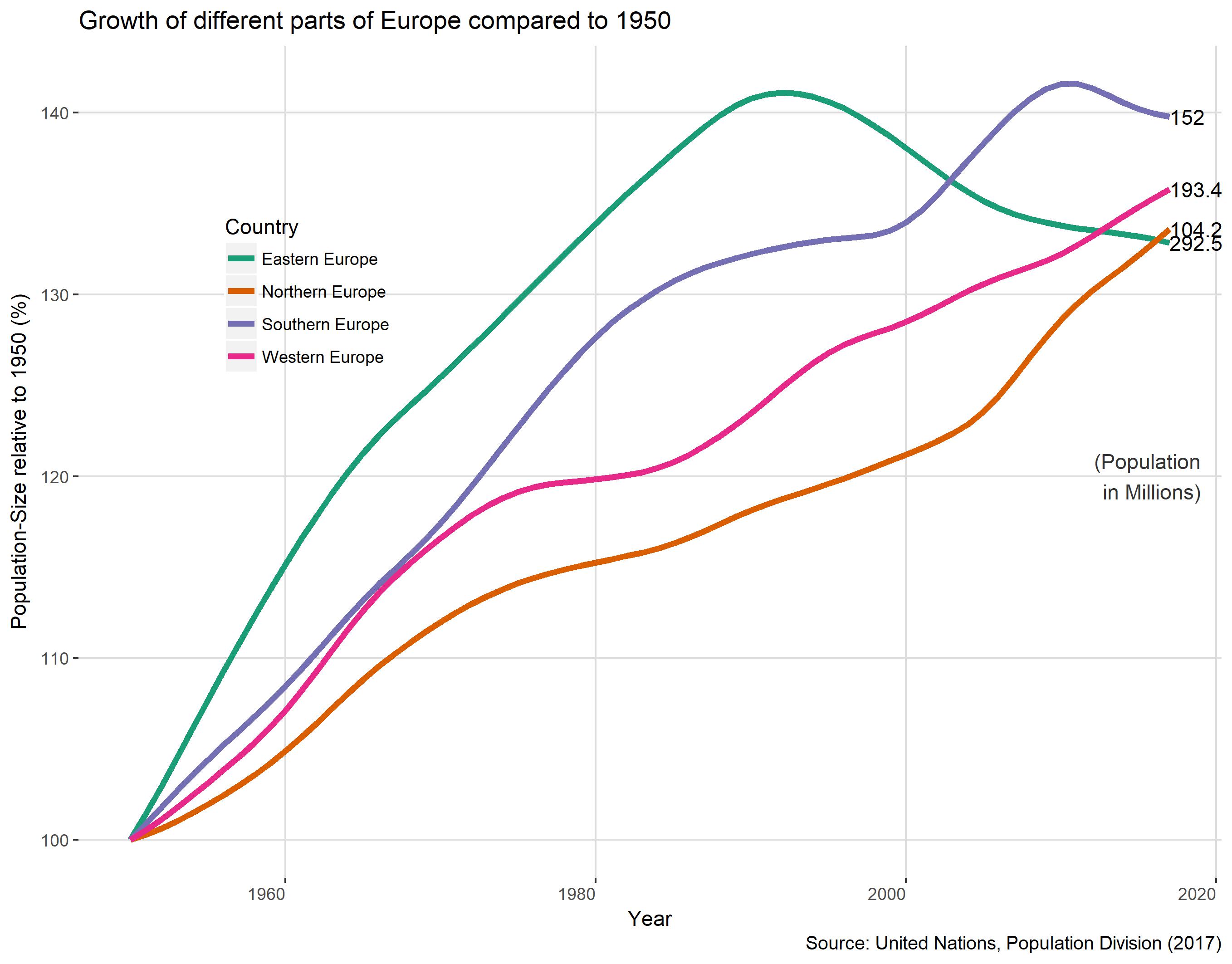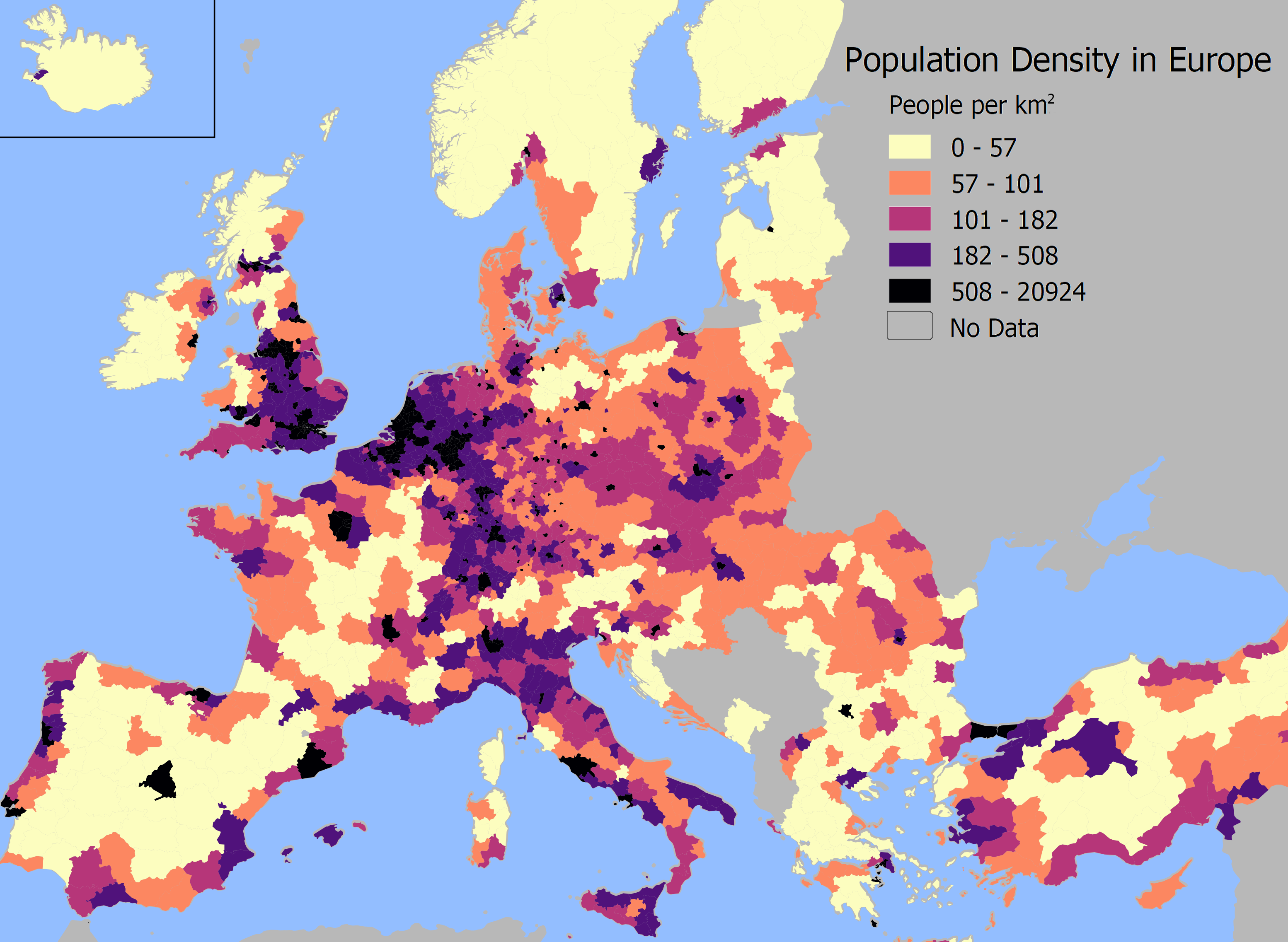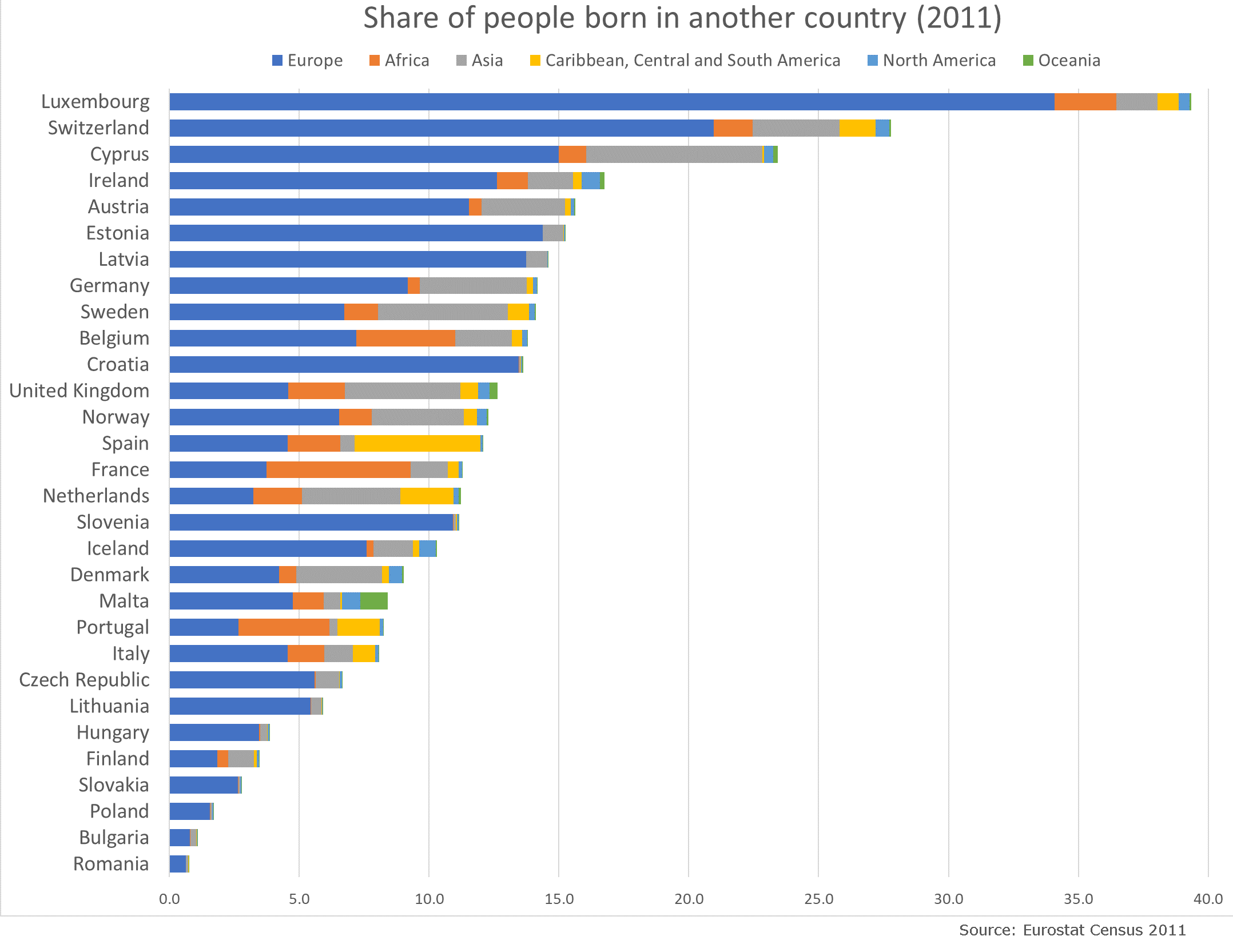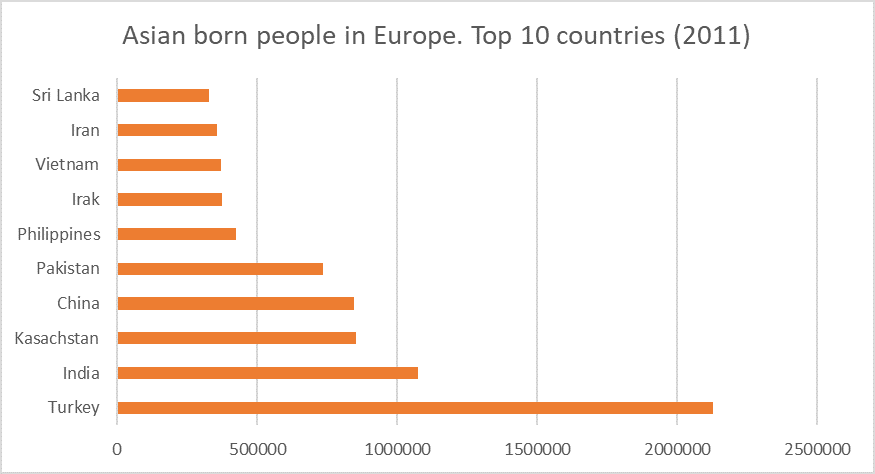I recently saw some people on Reddit analyzing their chat-conversations and I wanted to try it too. You can export a Whatsapp-Conversation by sending it as an Email to yourself. You will receive a txt-File with all the conversations. Because it isn’t formatted in a useful manner, you have to do it yourself. I will do this in this post and analyse the data in a second one. So this will be a bit more technical than usual. You can find the complete code here.
A dot-map of Europe
This map is a more leaning on the aesthetic- then data-side. The size of the dots correlates with the size of the population in that place. The color has no meaning and is just there to look nice. For the division of places I used the NUT3 standard which is quite useful, but has its problems if you use it to compare countries.
The Trams of Zurich animated
After I saw a great post on /r/dataisbeautiful where someone mapped a place with the help of location-data of rented bicycles, I searched if there is some similar data available where I live.
I created this animation in the first days of 2018. A few years ago I accepted that most of my data is stored somewhere. Instead of avoiding this like before, I started to embrace it. In Google Locations for example all the places where you have been are stored (if you didn’t disable it). It can be quite useful to remember what you did a certain day.
This data can also be downloaded and analysed. I didn’t do that, I just wanted to make a nice animation. To do thso at I imported the data it into R with the help of the json-Library. I just chose one value for each day and exported that new data. The next steps could have been done in R too, but I was less experienced with the program back then.
I imported the data to QGIS instead. With the help of the TimeManager-Plugin I exported a frame for each day. I loaded those into Hitfilms Express, which is a fantastic free video-editing software. I used gifmaker.me before to create Gifs, but they have a limit of 300 frames. I exported the video and uploaded it to Gfycat. And here it is.
How did the populations of European countries grow after the end of the 2nd world-war? To answer this question I downloaded population-data from the United Nations. I picked 1950 as my default year and looked how it developed from there.
The worldwide average for representation of women in national parliaments is about 21 percent. This number isn’t great. But 1990 the average was about 10 percent. We made at least some progress, even though there is a lot of space for improvement. Even in Europe with the highest average it’s just about a quarter.
In 2014 Switzerland had a referendum about the initiative “against mass immigration”. I passed with 50.33 percent to the surprise of most people. The result caused a turmoil in Swiss politics. The goal of the initiative was to introduce upper limits for immigration. This seemed to contradict the Schengen-agreement with the European Union. Implementing it would probably mean the end of free movement and risk the Bilateral treaties with the EU, which are an important pillar of the economic success of Switzerland.
For this graph I was interested in which countries had the highest immigration in recent times. I used data from the European Census 2011. Unfortunately the data is a bit old and there doesn’t exist a new version yet. Because Asia can mean a lot of things, I checked from which countries the most people come from. I didn’t count Russia as Asian here.
Because the numbers are quite old, I looked into recent numbers from Germany, where many would expect the most change. I found the Data on the website of the federal bureau for statistics. Unsurprisingly the number of immigrants has risen.